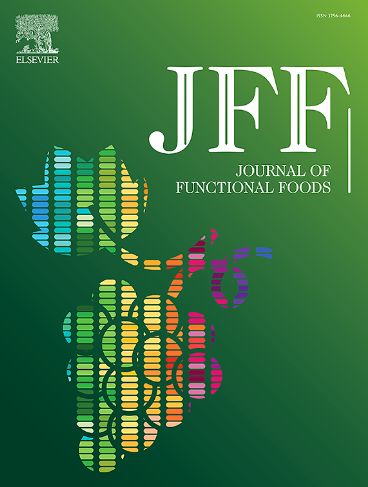慢消化淀粉的合成及其应用前景
IF 4
2区 农林科学
Q2 FOOD SCIENCE & TECHNOLOGY
引用次数: 0
摘要
慢消化淀粉(SDS)由于其延长的葡萄糖释放而具有潜在的健康益处,因此受到了广泛的关注。SDS逐渐稳定地释放葡萄糖,通过稳定血糖水平、降低胰岛素抵抗和支持体重控制,有助于控制糖尿病、心血管疾病和肥胖。SDS的形成受到淀粉来源和改性技术的显著影响。各种方法,包括物理,化学,酶和遗传修饰,已经开发出提高SDS含量。SDS在食品、制药和其他领域有广泛的应用,包括低血糖指数食品、控释药物、运动饮料和能量棒的生产。本文对SDS进行了全面的综述,重点介绍了SDS的生产原料、形成SDS的各种改性以及SDS的应用。本文章由计算机程序翻译,如有差异,请以英文原文为准。

Synthesis and potential application of slowly digestible starch
Slowly digestible starch (SDS) has gained significant attention for its potential health benefits attributable to its extended glucose release. The gradual and steady release of glucose from SDS helps manage diabetes, cardiovascular disease, and obesity by stabilizing blood sugar levels, reducing insulin resistance, and supporting weight control. The formation of SDS is significantly influenced by starch sources and modification techniques used. Various approaches, including physical, chemical, enzymatic, and genetic modifications, have been developed to enhance SDS content. SDS has broad applications in the food, pharmaceutical, and other sectors, including the manufacture of low-glycemic-index foods, controlled-release medications, sports drinks, and energy bars. This review provides a comprehensive overview of SDS, focusing on the raw materials involved in its production, various modifications for its formation, and its applications.
求助全文
通过发布文献求助,成功后即可免费获取论文全文。
去求助
来源期刊

Journal of Functional Foods
FOOD SCIENCE & TECHNOLOGY-
CiteScore
9.60
自引率
1.80%
发文量
428
审稿时长
76 days
期刊介绍:
Journal of Functional Foods continues with the same aims and scope, editorial team, submission system and rigorous peer review. We give authors the possibility to publish their top-quality papers in a well-established leading journal in the food and nutrition fields. The Journal will keep its rigorous criteria to screen high impact research addressing relevant scientific topics and performed by sound methodologies.
The Journal of Functional Foods aims to bring together the results of fundamental and applied research into healthy foods and biologically active food ingredients.
The Journal is centered in the specific area at the boundaries among food technology, nutrition and health welcoming papers having a good interdisciplinary approach. The Journal will cover the fields of plant bioactives; dietary fibre, probiotics; functional lipids; bioactive peptides; vitamins, minerals and botanicals and other dietary supplements. Nutritional and technological aspects related to the development of functional foods and beverages are of core interest to the journal. Experimental works dealing with food digestion, bioavailability of food bioactives and on the mechanisms by which foods and their components are able to modulate physiological parameters connected with disease prevention are of particular interest as well as those dealing with personalized nutrition and nutritional needs in pathological subjects.
 求助内容:
求助内容: 应助结果提醒方式:
应助结果提醒方式:


